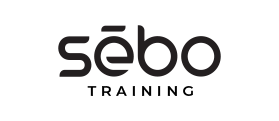- MUM (Multitask United Model) – 2021
- This update has to do with the introduction of an AI system capable of analyzing several sources of information to deliver more thorough answers to questions and more diverse content.
- Page Experience Update – 2021
- The focus of this update was on user experience by looking at metrics such as speed, Core Web Vitals, and security.
- Bert – Oct 2019
- This update changed how Google understands and interprets search query intent. Google can now better understand context and more conversational or complex queries and shows more relevant content based on the intended meaning of the search.
- Medic – May 2018
- A core update that heavily affected medical as well as other “You money or your life” (YMYL) websites. It emphasizes E-A-T (expertise, authority, trustworthiness) for content related to health, finance, legal, and other life-altering services/information.
- (Mobile) Speed – 2018
- Emphasizes the need for quick page loading times. Slow sites dropped in rank, especial for mobile.
- Possum – Sep 2016
- A big local search update. It affected who shows up on the map, who shows up on the right side of the page, and tried to add more variety to the results. It also boosted the results of businesses that are just outside the actual defined city limits. For example, a business in a suburb had a tough time ranking for a search with the main city listed. This helps those sites to show up higher.
- RankBrain – Oct 2015
- An artificial intelligence program created by Google that is actively learning what makes a certain page a good result for a certain keyword. It’s one the inputs into the SERPs and could eventually completely replace the algorithm.
- Pigeon – Jul 2015
- Focused on improving local search results. Used additional inputs other than keyword and vicinity. If there are two locations close by that match a query, Google previously would show the closest result first. Now there are other factors that may show a further location first if it is a better result.
- Hummingbird – Aug 2013
- Was a replacement of an old algorithm and focused on contextual interpretation. Seeks to show results based on the intent of the user, not just the keywords.
- Knowledge Graph – May 2012
- A repository of information about people, places, and topics that Google can show directly on the SERP instead of directing users to external pages to find the information.
- Penguin – Apr 2012
- Focused on the quality of the backlinks. Had an emphasis on over-optimized anchor text. Basically, if a web page gets 50 new links and 45 of them have the exact same keyword for the anchor text, Google is going to see that as unnatural.
- Panda – Feb 2011
- Focused on increasing the quality of content as seen by the user.
Sources: https://yoast.com/google-algorithm-updates/, https://searchengineland.com/8-major-google-algorithm-updates-explained-282627
